Top 5 Tips for Winter Fly-Fishing in Montana
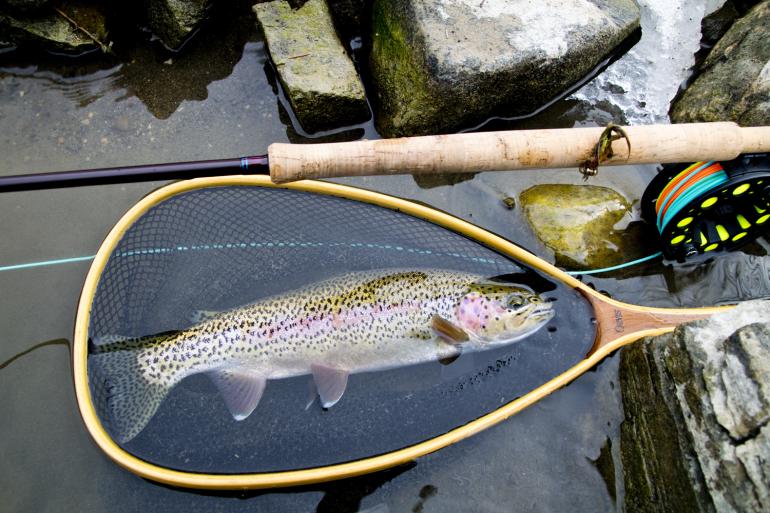
When the temperature begins to dip and the forecast calls for snow flurries and sunsets before work is over, the last thought for many is," where is my fly rod?” Winter has long been the season to hit the slopes and find our bliss with each carve in the fresh powder. However, some still keep their rods and reels in the car for those days in winter that boast great fishing and solitude on the river. For those that want to give it a try, here are our top 5 tips for successful winter fly fishing.
Pick Your day
There will always be water somewhere in Montana that will be fishable no matter the weather forecast or temperature. Some of the spring creeks keep a water temperature in the 40 degree range year round and never freeze while others, like Flathead Lake or Hebgen, will be frozen until May. Most of the rivers however, will still have flowing water in them year round, making them fishable for the fly angler. Though this may be true, not all days will be productive. The days below freezing will be difficult both for the trout and angler. The fish move very little in winter, thus making it difficult to try and land a catch. Pick the days that are at or above freezing. Wait until the warmest part of the day, typically an hour or two before sunset to get out on the river. Consistently, the overcast days seem to be more productive than the bright sunny days.
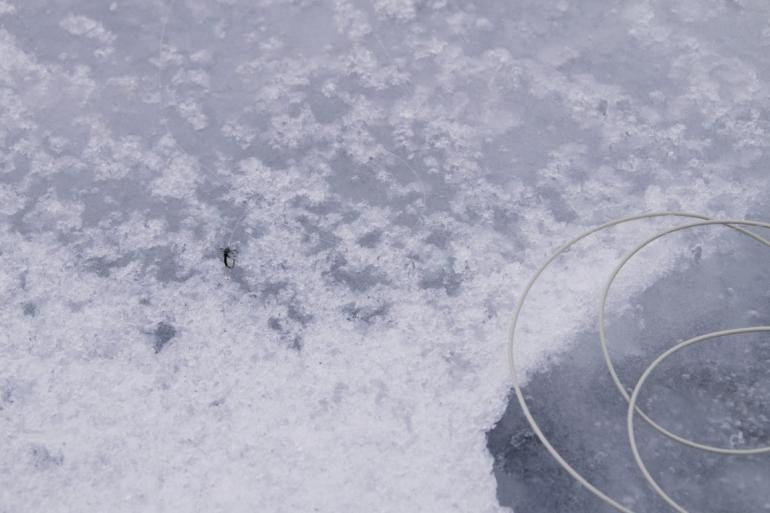
Layer Up
Staying warm on the water is crucial. If your not, it will be a miserable experience. Beyond the waders and wading boots, beneath those should be long underwear and a thick pair of wool socks. Maybe even a packet of foot warmers to keep things extra toasty. You don’t want to be Michelin Man but you also don’t want to freeze, so there is a fine line where you should layer your upper torso. If it is snowing, wear a waterproof jacket with many base layers beneath. A beanie and a pair of gloves can be life savors for an afternoon on the water, especially when the wet fishing line hits your cold hands.
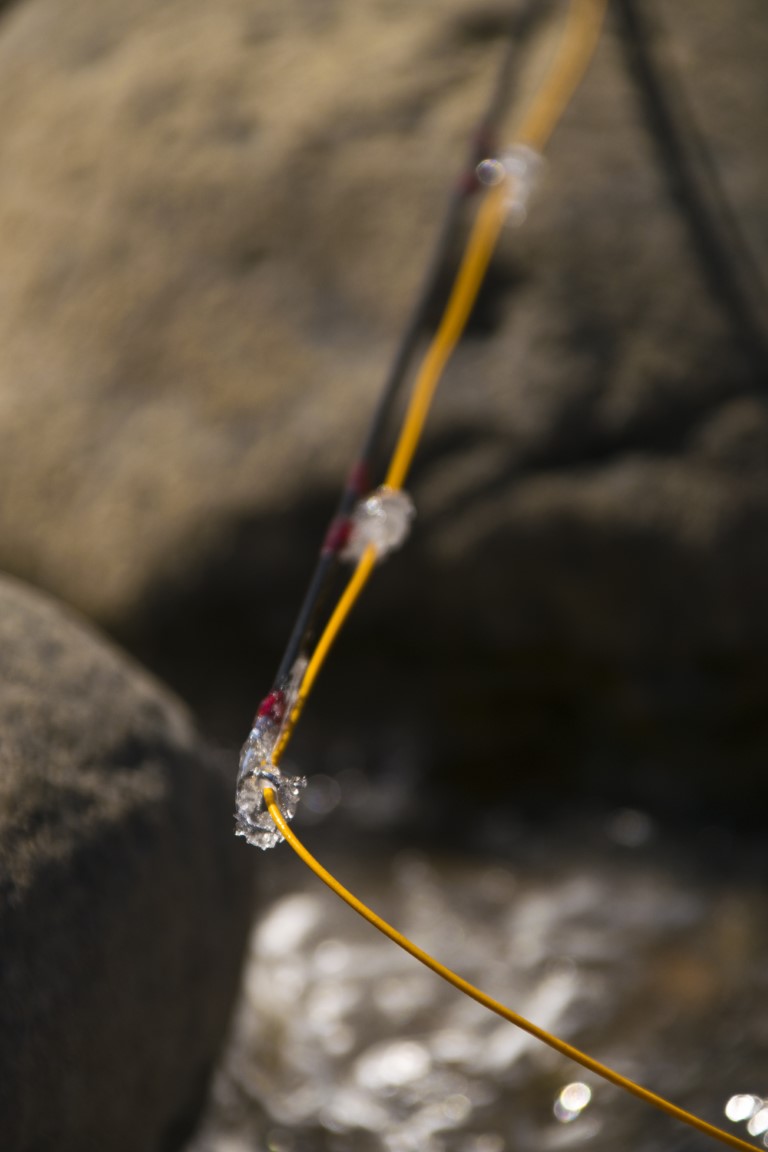 Pick your Pattern
Pick your Pattern
As odd as this may sound, the patterns in winter vary little. From the months of November through early April, there are, “go-to,” patterns that work consistently throughout winter. The classic and most reliable setup for consistent angling would be the simple nymph rig, with a Pats Rubber Leg stone fly with a dropper fly of smaller size. Such as the zebra midge, copper john, or san juan worm to name a few. Other bodies of water throughout the state may have some variances within their waters and you should consult with your local fly shop and go from there. On overcast, warmer days, an angler can try their luck at stripping streamers such as woolly buggers, leeches or even sculpins and crayfish. Believe it or not, you may see fish rising to dry flies in the heart of winter, and if so, they’re most likely sipping midges from the surface. Size 24 and smaller so make sure your eyes are sharp if you tie a midge on and try your luck.
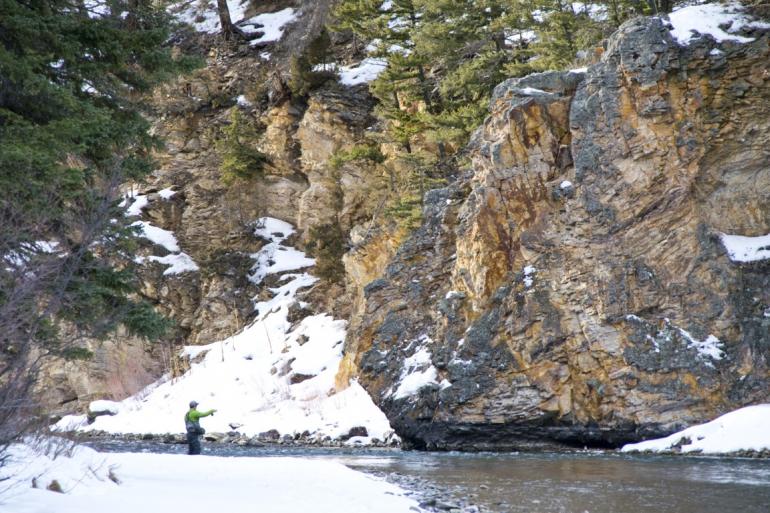
Presentation is Everything
With the basic patterns listed, you could be doing everything right on the water for hours, and still walk away without so much of a strike to show for. Presentation of your fly must be perfect. We don’t move fast or very well in the cold and neither do trout. They are trying to conserve energy in the cold and will move hardly at all to eat. Though they are eating throughout winter, they will burn very little precious energy to do so. An angler must fish the right holes on the river and have the flies presented in a way to either swing directly in front of the fish or in a provocative manner to stimulate a movement for a strike. This is difficult to achieve but paramount in the success of the winter angler.
Pick Your Water
The final nail in the coffin for a successful day on the water in winter is where to fish. If an area is frozen over, it is safe to say whatever fly tied on or presentation you offered, no matter how perfect, isn’t going to work. That being said, if it’s the nearby creek close to home, or a road trip to one of the many blue ribbon trout streams we have in Montana, you must pick your spot carefully. If the area is riddled with fast moving water and riffles for miles, the likely hood of catching a fish in these waters is slim. But if you stumble upon deep pools with slow moving water, wade out and cast into the deepest slowest sections of that pool. Fish the slow water and deep pools. As mentioned, the fish are conserving energy in winter. Therefore the deep and slow moving bodies of water will boast the most fish and the greatest chance at landing a winter trout on the fly.
With all mentioned, even the greatest angler can still walk away from the water without a strike. But that is also why it is called fishing and not catching. And no other season than winter reminds an angler of this. Whether you land a fish or not, the solitude of the river is hardly shared unless you bring a few friends along. But with some persistence, patience, and maybe a little extra coffee or tea to keep you warm, anyone can have a great day on the water. Remember, if you do luck into a fish in winter, please handle the fish with the utmost of delicacy. Never take the fish out of the water and try your best to quickly release so we can all enjoy the chance at a healthy fishery for the future.
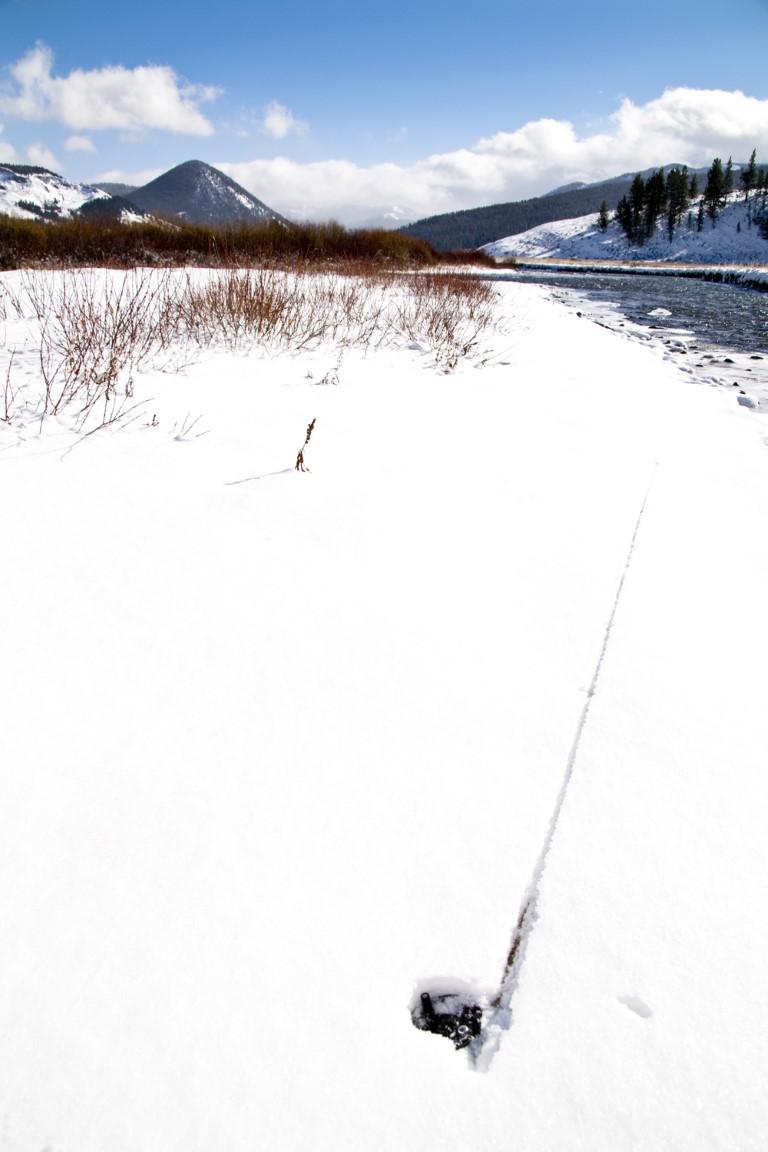





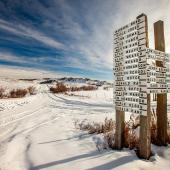






- Reply
Permalink